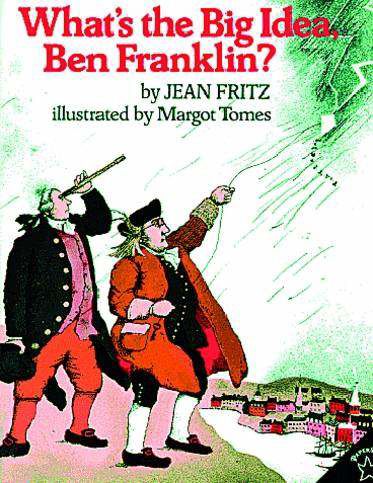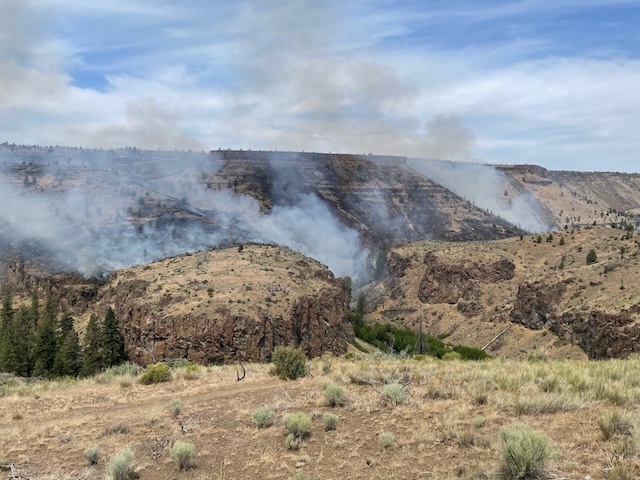Hot dogs and history
Published 5:00 am Friday, June 30, 2006

- Hot dogs and history
Usually the Reuter family celebrates the Fourth of July in traditional Bend fashion. They watch the annual pet parade, barbecue and then gaze at the fireworks exploding over Pilot Butte. But this year, the family is breaking its traditions.
Instead of listening to the screech of fireworks filling the streets of Bend, the Reuters will spend the Fourth immersed in American history.
During America’s most patriotic, flag-waving holiday, the Reuters will be in the patriotic center of our country: Washington, D.C. They are going to visit the museums and memorials and soak up American history. Then, on the Fourth of July, the Reuters plan to find a good spot along the National Mall and watch the fireworks fill the sky above the nation’s capital.
Jennifer Reuter is excited for her two daughters, ages 7 and 9, to see Washington, an experience she thinks will be all the more meaningful while the country celebrates Independence Day.
”We are going to see where it all started,” said Reuter.
Living on the West Coast, she says, can make it difficult to feel connected to America’s rich history. Reuter remembers her first trip to the East Coast and being struck by how old everything was. She remembers the cobblestone streets and seeing the Liberty Bell in Philadelphia.
”I’m excited to show the kids that (history),” said Reuter.
She hopes the experience solidifies the knowledge her daughters already have about the history of the nation and inspires them to want to learn more.
Of course, teaching kids about the early days of our country is a lot easier standing in Washington than it is in Central Oregon, a place known more for mountain vistas than national monuments. There are plenty of ways, however, to teach the story behind the Fourth of July without leaving Central Oregon.
Taking time to learn a little about the historical aspects of the Fourth of July can be fun and easy. In fact, Independence Day offers a great opportunity to introduce children to America’s origins. The holiday offers an easy tie-in that gives families a chance to explore Colonial times, many famous historical figures like Thomas Jefferson, John Hancock and Benjamin Franklin, as well as the freedoms they helped establish in the United States.
Parents are key
Christmas and Halloween are the holidays that get the most attention from parents and kids, according to Heather McNeil, youth services manager for the Bend Public Library. Books about those two holidays fly off the shelves, while books about the other holidays are often overlooked.
A handful of parents each year are interested in looking up books about the meaning of Easter (hint: it’s not bunnies and colored eggs). But McNeil says few, if any, ever think about checking out books on the meaning of Memorial Day, Labor Day, Veterans Day, Saint Patrick’s Day or the Fourth of July.
Of course, most parents want their children to appreciate Independence Day on a level that goes beyond hamburgers and firecrackers.
Shannon Reitan, of Bend, knows it’s too early to begin teaching his 2-year-old son history lessons. But over time, Reitan hopes the little boy will appreciate ”our independence, I guess, and the sacrifice people made for that independence.”
Bend resident Sandi Perl also hopes her son, who recently finished kindergarten, increases his knowledge of the holiday as the years pass.
”I want him to know how important our country is,” said Perl. ”It’s wonderful to live in a country that’s free.”
Because the Fourth of July is one of the few holidays that falls during the summer months, parents can’t rely on teachers to provide the history behind the celebration. That means it’s up to parents to make sure their children understand what all the fuss is about.
Kid appeal
Teaching about American history can seem daunting and, let’s be honest, a bit boring for a nice summer day. But while reading about historical figures might sound like a tough sell for kids, there are plenty of things about the origins of the Fourth of July that should be interesting for them and their parents.
The Fourth of July is a celebration honoring the adoption of the Declaration of Independence by the Continental Congress on July 4, 1776. The document, written by Jefferson, declared that the 13 colonies would no longer be ruled by England and would become free and independent states.
While a group of men deciding to adopt a document might not sound very exciting, many of the themes tied to the Declaration of Independence and the Revolutionary War have tremendous kid appeal.
Start with the Declaration of Independence. It basically tells the story of people who grew tired of being told what to do and decided to stand up and do something about it. Colonists didn’t like the taxes imposed by England’s King George III and resented the fact that they didn’t have a say in the government’s decisions. To understand how colonists felt, one Web site (www.kidsdomain.com) asks children to ”imagine how you would feel if someone older than you (maybe an older sister or brother) kept telling you what to do all of the time and kept taking more and more of your allowance.”
Of course, this comparison is an oversimplification of the issues, but it gets the point across and may get children interested in learning more.
The declaration also helped establish certain freedoms that Americans still enjoy, most notably the idea that all men are created equal. Parents might explain that this idea of equality didn’t exist in England, where royalty and bloodlines determined the fate of most men. But in America, rich and poor were considered equal and both would be free to pursue happiness, which is another idea that appears in the declaration. (Of course, the notion of equality at this time didn’t extend beyond white men, as slavery was still legal and women couldn’t vote.)
The Declaration of Independence wouldn’t mean as much today, however, if Americans didn’t win the Revolutionary War, which is another subject that may appeal to kids, who usually love to root for the underdog. And the 13 colonies were certainly underdogs against the powerful British army.
McNeil believes that the story of the Revolutionary War is exciting because it is such a dramatic story. The war essentially pitted a group of determined farmers against an organized army.
”It’s astounding we won the Revolutionary War,” said McNeil.
Library to the rescue
Parents shouldn’t worry if their memories of the events surrounding the Declaration of Independence are a bit rusty. They should focus on the big themes like celebrating freedom and try to pick up the details (like when the Boston Tea Party took place and what the Stamp Act was) at the local library, which is packed with resources.
McNeil says that the children’s books covering historical subjects have improved dramatically in recent years. Many are filled with beautiful illustrations or use quirky humor to attract young readers. McNeil suggests that biographies of people like Jefferson and John Hancock are often great places to start.
Of course, different approaches are necessary for different ages. When kids are about 3 years old, parents can begin to introduce the idea of celebrating the United States and freedom, according to McNeil. As children get older, parents can incorporate facts about flags and that the celebration started more than 200 years ago. By age 6, kids may be ready to go to the library and check out a book or two on the subject, maybe a picture book about Jefferson or the illustrated Declaration of Independence.
By about age 9, McNeil says between school, parents and the library, kids can have the tools they need to know the basics about the founding of our country and gain a richer appreciation for the Fourth of July celebration.
Learning about the history behind the fireworks and the barbecues can make the Fourth of July more meaningful for children. Hopefully kids can see that the celebration is not just about what the Founding Fathers did more than 200 years ago; it’s about honoring the country those men helped create and the freedoms they helped ensure for the American people.
Focus on the Fourth
Local libraries offer books that focus on the Founding Fathers, the Declaration of Independence and the Revolutionary War. Heather McNeil, the youth services manager for the Bend Public Library, identified the following as a good sample from that collection.
”Thomas Jefferson, A Picture Book Biography” by James Cross Giblin, illustrated by Michael Dooling
This picture book contains rich illustrations and an abbreviated history of Jefferson’s life, including important details regarding the Declaration of Independence and the Louisiana Purchase.
”The Journey of the One and Only Declaration of Independence” by Judith St. George, illustrated by Will Hillenbrand
Very colorful and playful book describes the declaration’s journey throughout the years. The document’s journey allows readers to learn about not just the Revolutionary War but the Louisiana Purchase, the Civil War and a number of important locations in Washington, D.C., as well.
”The Declaration of Independence, The Words That Made America” illustrated and inscribed by Sam Fink
Except for its introduction, this unusual book contains only the words of the Declaration of Independence, as written by Thomas Jefferson. While some of the phrases may be difficult to understand, the playful and creative illustrations will help kids (and parents) understand their meaning.
”Thomas Jefferson” written and illustrated by Cheryl Harness
This picture book tells the story of Thomas Jefferson from his birth through death and hits all the high points. It contains very lively illustrations, including some rough maps of the Louisiana Purchase and the home Jefferson designed called Monticello. The book also doesn’t shy away from some of Jefferson’s imperfections.
”Forming a New American Government” by Dale Anderson of the World Almanac Library
This is a very detailed and thorough exploration of the formation of the United States. It is probably best suited for older children. The book is broken up into chapters and includes illustrations as well as short, easy-to-read fact boxes.
”What’s the Big Idea, Ben Franklin?” by Jean Fritz, illustrated by Margot Tomes
Although this book is 30 years old, it hasn’t diminished in its readability. Kids will still enjoy the good storytelling, simple pictures and interesting facts. Franklin lived a very colorful life, and this book conveys that in an entertaining and fresh way.
”The Declaration of Independence, The Story Behind America’s Founding Document” by Kerry A. Graves
Simple, straightforward storytelling and historical photos make this a very informative book for kids. The book features old paintings, pictures of documents and famous quotes. It also includes a section on events inspired by the Declaration of Independence, the efforts to preserve the document and a glossary of terms.
”Will You Sign Here, John Hancock?” by Jean Fritz, illustrated by Trina Schart Hyman
Another oldie, but goodie, from Fritz. This book tells the interesting life story of Hancock, who is often known for little other than his large signature on the Declaration of Independence.
Fourth of July on the Web
How to Marry a Founding Father: Kids and even adults may find this site entertaining and informative. It uses a lighthearted, almost flip, tone: www.law.umkc.edu/faculty/projects/ftrials/conlaw/marry.htm
Teacher Vision: This Web site offers a wide range of kid-friendly information about the Fourth of July, including fun trivia: www.teachervision.com and follow the links to the Fourth of July.
Capitol Fourth: This Web site from PBS includes a section on the history of the Fourth, celebrations through history, thoughts from celebrities and much more: www.pbs.org/capitolfourth/
Kids Domain: Very kid-friendly, easy-to-read Web site features fun crafts and games and also a good section on the basic history of the Fourth: http://www.kidsdomain.com /holiday/july4/
Scholastic Recommendations: This site makes great book recommendations to help inspire kids to learn about many different aspects of American history. www.scholastic.com/familymatters/read/all/bl_america.htm
– Alandra Johnson






